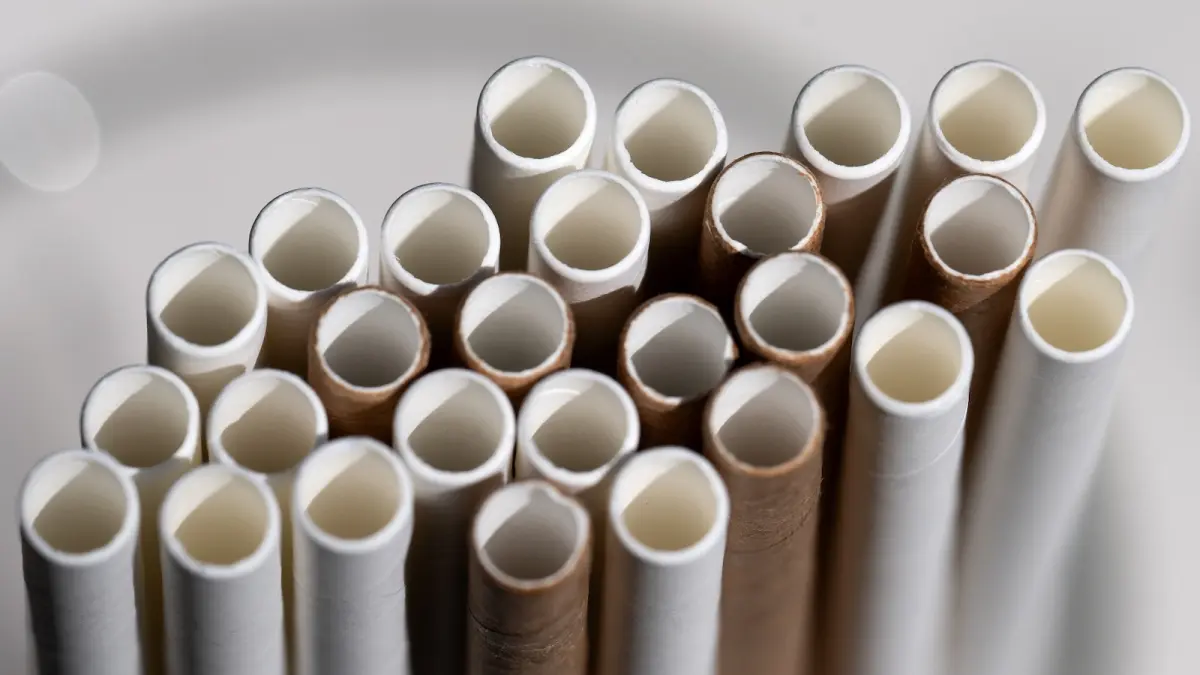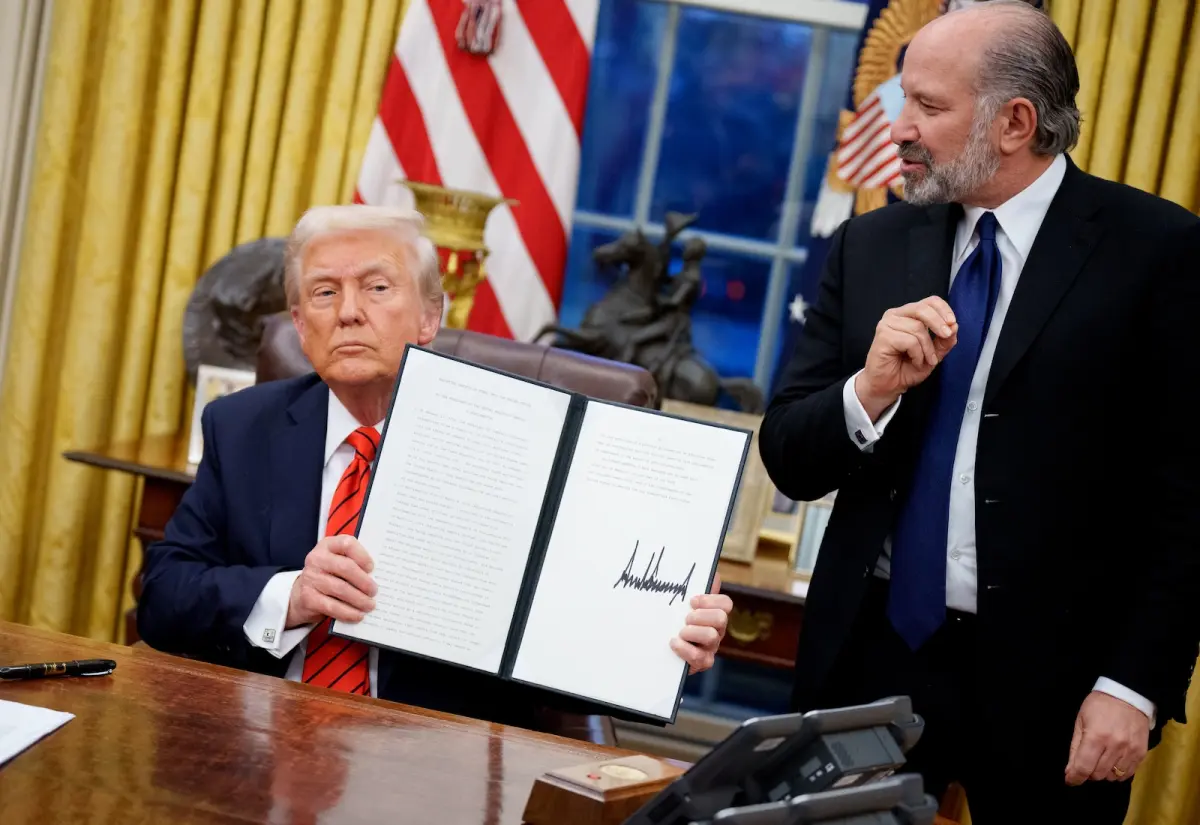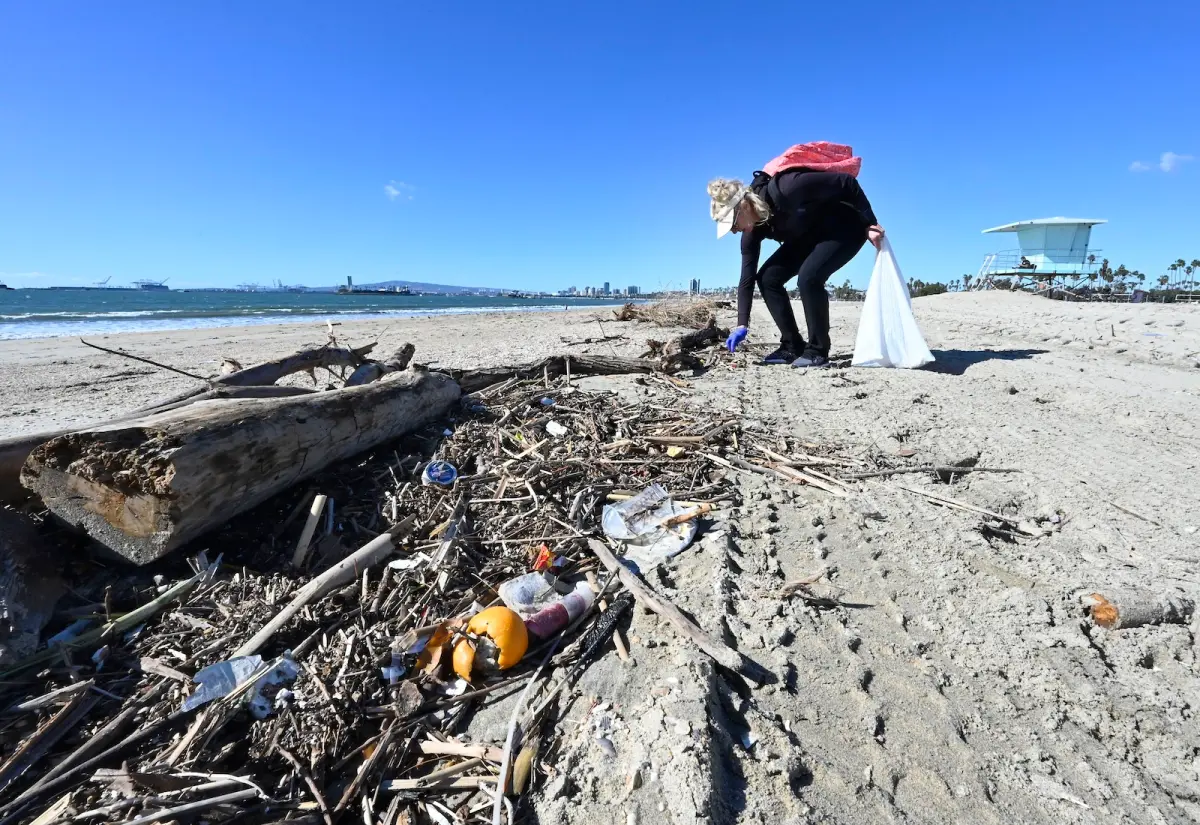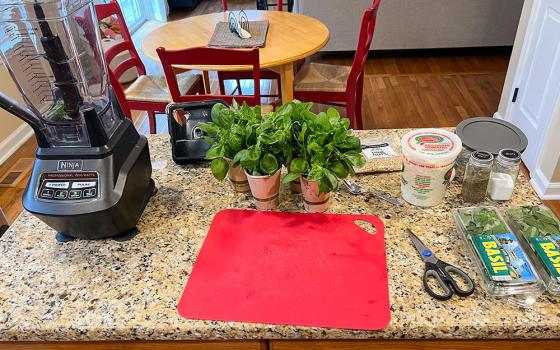
(Sebastian Gollnow / Picture Alliance via Getty Images via Grist)
[Editor's note: This story was originally published by Grist. Sign up for Grist's weekly newsletter here.]
President Donald Trump signed an executive order last week to end the federal procurement of paper straws.
The order, which claims that paper straws are “nonfunctional” and says it wants to end the “forced use” of them, immediately undoes part of a Biden-era initiative to eliminate single-use plastics, including straws, in all government operations by 2035. More broadly, Trump instructed White House staff and “relevant agencies” to issue a “national strategy to end the use of paper straws” within 45 days. The strategy would aim to eliminate all executive branch policies “designed to disfavor plastic straws” and address the federal government’s contracts with states and and other entities “that ban or penalize plastic straw purchase or use.”
Advertisement
“We’re going back to plastic straws,” Trump said during a signing ceremony in the Oval Office. His staff secretary, Will Scharf, said that policies encouraging the use of paper straws had cost the government and private industry “an absolute ton of money, and left consumers all over the country wildly dissatisfied with their straws.” (According to one industry executive, paper straws each cost a penny more to make than their plastic counterparts.)
Plastic straws have become an international emblem of the harms of plastic pollution, and Trump’s order is the latest salvo in a culture war that pits care for the environment against values like masculinity and freedom. In terms of actually curbing or exacerbating plastic pollution, any policy that only targets straws is mostly symbolic: Of the 8 million tons of plastic waste that reaches the world’s oceans annually, straws make up just 0.025 percent, according to National Geographic.
What’s more, it’s unclear how much of the United States’ plastic straw use is driven by federal procurement, given the decentralized nature of this purchasing. The U.S. is the world’s largest buyer of goods and services, but the bulk of its spending in the former category is on drugs, metals, medical equipment, and software. It’s likely that private companies, not government agencies, buy most of the hundreds of millions of plastic straws estimated to be used nationwide each day. Some companies — Alaska Airlines and Starbucks, for example — have long ago pledged to move toward strawless or compostable straw options amid growing concerns over plastic’s impacts on wildlife and ecological health.
Plastic straws, like other plastic products, are made almost exclusively from fossil fuels. They cannot be recycled due to their small size and light weight. When they aren’t sent to landfills or incinerators, they fester in the environment as litter, breaking into microplastics that attract pathogens, release chemicals, and clog up animals’ digestive systems.

President Trump holds his signed executive order to end federal procurement of paper straws. (Andrew Harnik / Getty Images via Grist)
The second part of Trump’s executive order, calling for a “national strategy to end the use of paper straws,” seems to take aim at the suite of local and regional restrictions on single-use plastic straws that have passed in recent years, including in Seattle, Los Angeles, Miami, and New York City. It’s unclear, however, whether and how the strategy would affect these policies. In an extreme scenario, the Trump administration could try to use unrelated contracts, such as those related to funding for infrastructure projects, as leverage to get cities and states to drop their plastic straw restrictions.
The executive order is “open for interpretation and also a cause for concern,” said Anja Brandon, director of plastics policy for the nonprofit Ocean Conservancy. “States are the testing ground for a lot of really good policies [on plastics], and we want to make sure that the states that have been taking action remain protected.”
The White House did not respond to Grist’s request for comment.
The movement against plastic straws began around 2011, when a 9-year-old from Vermont estimated — with input from straw manufacturers — that U.S. consumers throw away half a billion straws each day. The finding was published by an advocacy group called Eco-Cycle and widely covered in the media. (Market research firms would later revise the figure downward, to somewhere between 170 million and 390 million straws daily.)
Later, in 2015, a video of a marine biologist extracting a plastic straw out of a turtle’s nostril helped turbochange the anti-straw movement, catalyzing plastic straw bans around the world, including in Queensland, Australia; Taiwan; and Tanzania. Few, if any, jurisdictions mandated the use of a particular alternative. Some businesses in affected regions began offering paper straws, while others turned to straws made from sugarcane or wheat. Others opted for bioplastics made from corn, agave, or other nonpetroleum materials.
There’s evidence that the public outcry and bans have had an effect: One market research firm found that plastic straws lost market share between 2017 and 2022, going from nearly 100 percent of U.S. demand for straws to roughly 75 percent.
Environmental advocates say the intense public focus on straws largely misses the point. Brandon said plastic straws are “just the tip of the iceberg” when it comes to the bigger-picture problem of plastic pollution, and their visibility as litter should highlight the need to move away from all types of single-use products, such as bags, plates, takeout containers, and cutlery. Advocates say these products can either be eliminated altogether or replaced with reusables made from glass, metal, cloth, wood, or other materials.

A resident of Long Beach, California, picks up plastic and other trash from a beach. (Brittany Murray / MediaNews Group / Long Beach Press-Telegram via Getty Images via Grist)
That’s not to downplay the real-world impacts of eliminating plastic straws. Brandon said straws are one of the most commonly collected single-use plastic items at Ocean Conservancy beach cleanups. In 2023, volunteers associated with the organization collected 416,000 plastic straws from beaches and waterways, which is about the same as the number of plastic cups and plates, and slightly smaller than the number of plastic grocery bags. Plastic straw bans could, in theory, chip away at the amount of plastic that winds up on beaches.
Banning individual single-use items like straws “has an immediate positive benefit for the environment, and is an opportunity for education and conversation about the broader plastic pollution crisis that we are in,” Brandon said.
While it’s unclear whether Trump will try to roll back restrictions on other types of single-use plastic, his administration has so far been extremely supportive of fossil fuel interests, which donated more than $75 million to his 2024 presidential campaign and stand to benefit from uninhibited plastic production. Even before Election Day, the Trump campaign had suggested it would not participate in or try to water down United Nations negotiations for a global plastics treaty. Now, Industry leaders are trying to build momentum around the phrase “back to plastic,” which the president used in a social media post earlier this month.
“Straws are just the beginning,” said Plastics Industry Association CEO Matt Seaholm, in a statement. A few days later, he wrote in the Daily Wire that bans on single-use plastic were “emotional policies” promoted by “extremist groups”: “Now is the time to hit reset on the misguided policies of the past few years, heed the words of the president, and go ‘back to plastic!’”
Polls show that the public does not support policies to increase plastic use. According to one survey commissioned by the nonprofit Oceana, which advocates for reducing single-use plastics use as a means of protecting marine environments, 82 percent of U.S. voters specifically support a reduction in the amount of single-use plastic used by states and in the federal government, and 80 percent want companies to reduce the single-use packaging they offer.
“A push to have more plastic in the U.S. is not what voters are asking for,” said Christy Leavitt, Oceana’s plastics campaign director. “What the federal government needs to do … is pass policies to reduce the production and use of single-use plastics.”





